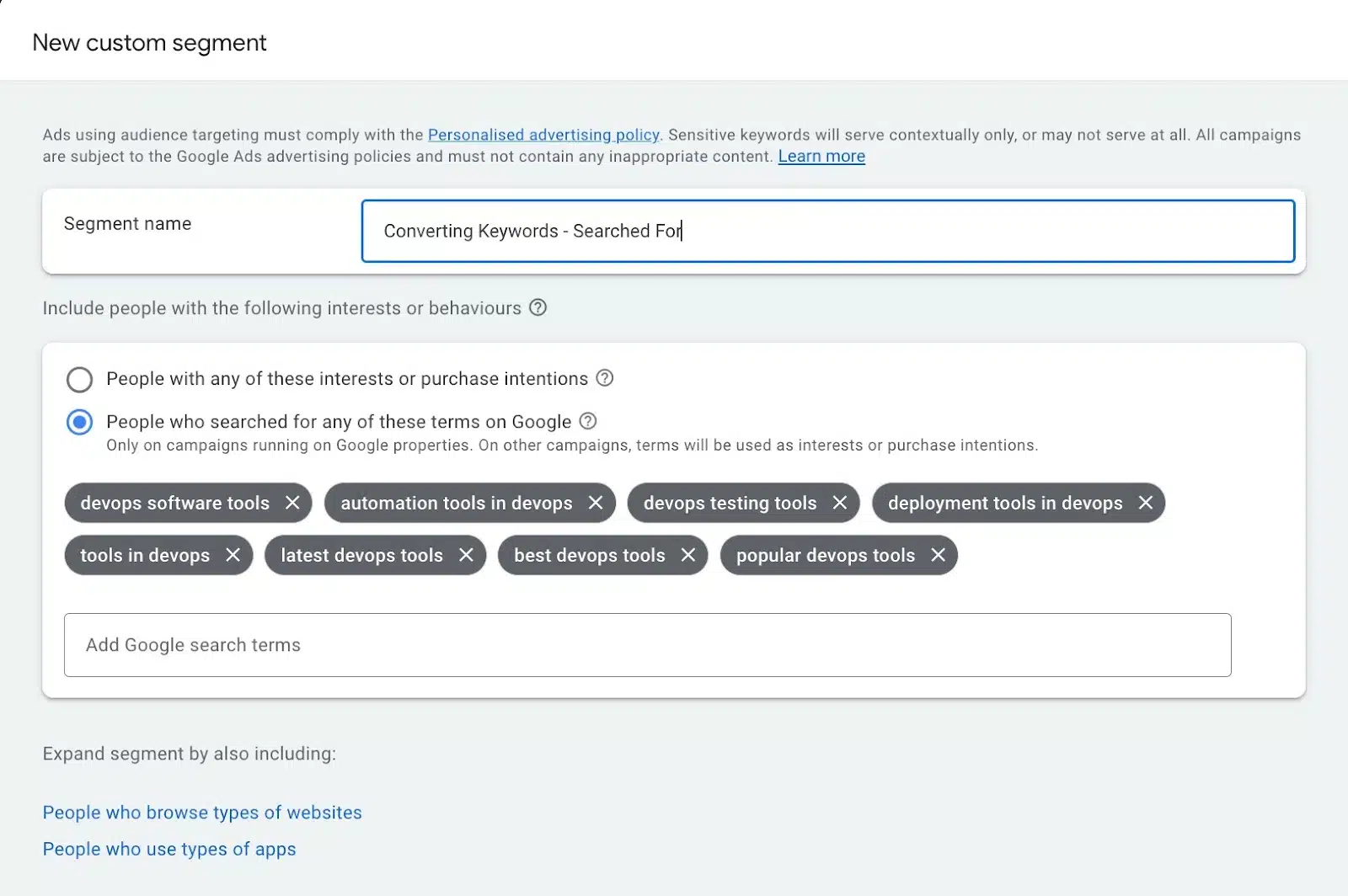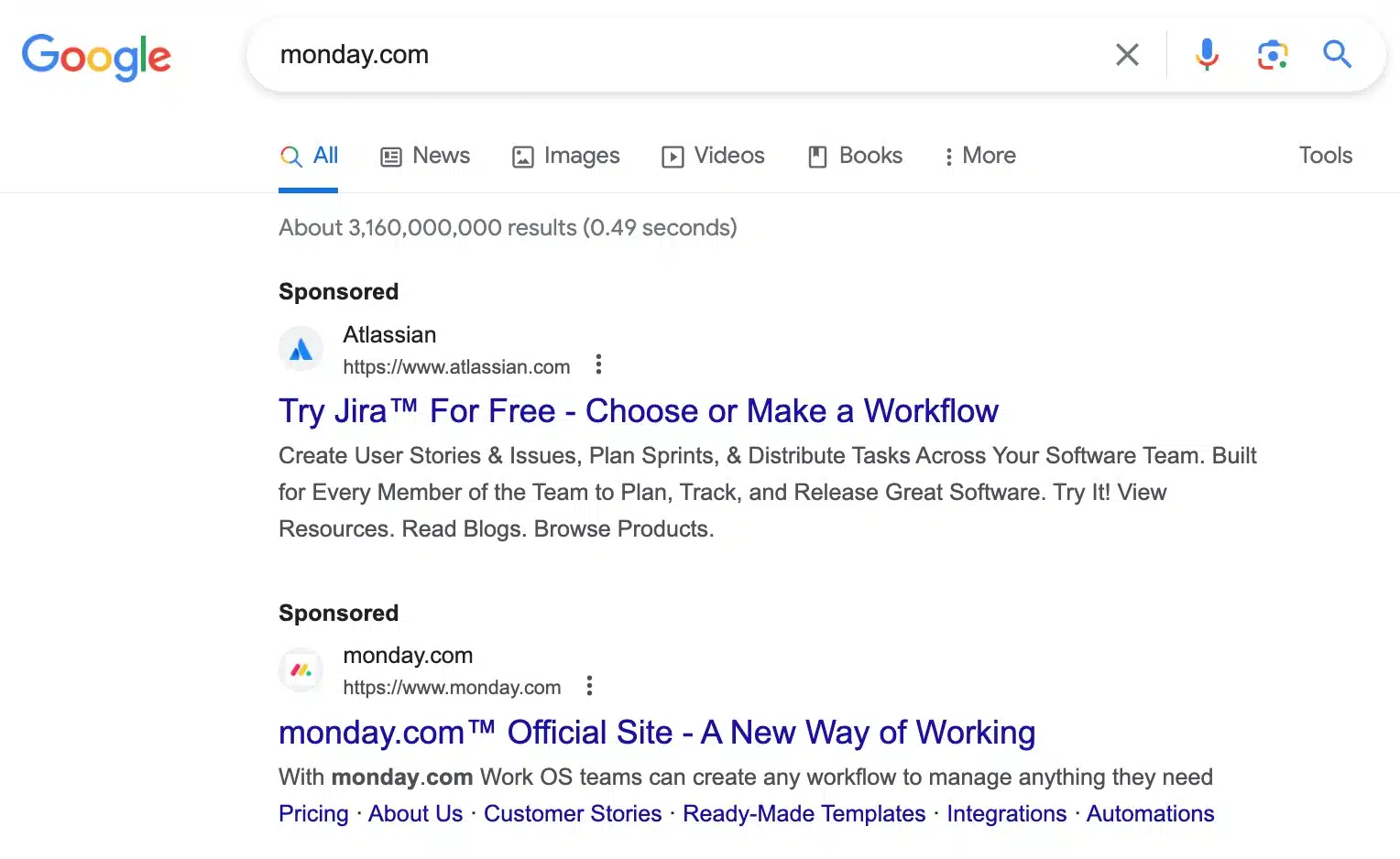How to get the most out of PPC for your SaaS brand
These five PPC tactics can help you cut through the noise, increase brand awareness and attract new customers in a competitive SaaS market.
With more startups than ever entering the market, it is becoming more difficult for SaaS brands to cut through the noise.
That’s why many have realized that PPC can be a fantastic way to build brand awareness and draw in new customers.
However, a more strategic approach is required to run campaigns effectively and gain a competitive edge.
It is not enough to set and forget campaigns. There is a lot more that SaaS brands can do to elevate their performance.
Here are five ways SaaS brands can get the most out of PPC campaigns.
1. Build a cold audience display campaign
Dear SaaS businesses: not everyone knows about your brand.
Most people are aware that there are solutions available to solve their problems. But they are less likely to know specific brands which provide a suitable product.
To build brand awareness and influence consideration with these types of individuals, you must reach out to them through your marketing efforts.
One way to do this is to run a cold audience display campaign in Google Ads.
The term “cold audience” refers to individuals who have not yet engaged with a brand and, in this case, still fall within the parameters of the brand’s target audience.
By running display campaigns targeting these individuals, SaaS brands can build brand awareness with new potential customers and influence their purchasing decisions.
Display campaigns enable brands to showcase their software through image and video assets, which can be more eye-catching than text-based ads.
Through these visual assets, SaaS brands can give potential customers a feel about how their software looks and feels.
What’s more, SaaS brands can use a range of targeting options to reach their target audience while they browse the web.
To effectively run a cold audience display campaign, consider targeting your campaigns by:
Custom segments
Custom segments enable advertisers to target audiences based on a range of online behaviors, including:
- What they have searched for in Google.
- What websites they have browsed.
- What apps they have used.

Use converting keywords from your search campaigns and research into websites and apps your target audience frequently uses to build these segments.
In-market audiences
In-market audiences let you target people actively researching or comparing SaaS products or services. Relevant segments include antivirus and security software, video software and accounting software.
Individuals within these groups have been categorized by:
- The types of websites they use.
- The content they engage with.
- How frequently they have been visiting relevant websites.
This indicates they have a relevant intent to convert in the near future.
Affinity audiences
Affinity audiences enable you to reach people based on who they are, what their interests are and what types of habits they have.
Use match affinity audience options with the personas of their target audience. For example, high-end computer enthusiasts, PC gamers or cloud services power users.
2. Use customer match exclusions
With the average CPC of a PPC campaign in 2023 coming in at $4.22, you need to ensure every click counts.
One thing you don’t want to be doing is paying for clicks from existing customers looking to log into their accounts.
By excluding current customers from seeing ads, you can ensure your budget is spent on reaching potential new customers, not those already using their software.
To do this, create a new audience list by uploading a list of your current customers using first-party data, such as email addresses, phone numbers and user IDs.
Then, manually add them as exclusions under the Audience tab of each of your active campaigns.
Consider creating exclusions for those currently within the “lead to sale” process.
For example, those who have already claimed a free trial, are newsletter subscribers or are in contract discussions with the sales team.
There is little value in spending money on those who are already:
- Engaging with the software.
- Communicating with the sales team.
- Receiving marketing communications through emails/newsletters.
3. Use remarketing lists
Rarely will an individual engaging with your website for the first time be ready to convert.
It’s more likely that they will need time to find out more about your brand, continue researching their situation, check out alternative providers and discuss their options with other stakeholders.
During this period (which could be weeks or months), it is vital to retain top-of-mind awareness. You can not afford to fall off a potential customer’s radar before the final consideration stage.
One way you can reach out to previous site visitors and remind them of your product is by using remarketing lists and using them as targeting for display campaigns (Google Ads) or audience ads campaigns (Microsoft Advertising).
The biggest advantage of running such campaigns is that the audience has already shown interest in the software and will therefore have a higher intent to convert.
By reaching out to these previous site visitors again, you can encourage them to return to the website to convert.

To take this to the next level, consider offering something extra in your ad messaging that wasn’t available during the initial website visits.
This could be more information about your brand, such as a glowing customer review or reviewing website ratings, or an extended trial or discount code.
For example: If a website offers a 7-day free trial, the messaging in the remarketing display campaign could offer an exclusive 14-day free trial.
While a 7-day trial may not have persuaded an individual to convert, an exclusive extended trial could be what it takes to bring them in.
4. Engage in competitor bidding
SaaS is a real dog-eat-dog industry. Brands must do what they can to outsmart their competitors. One way to do this is by engaging in competitor bidding.
Competitor bidding refers to running search campaigns or ad groups with keyword lists targeting competitors’ branded keywords.
So when someone is searching for a particular software provider, they are presented with an ad for an alternative provider instead.
This can be an effective strategy in SaaS as it enables you to get in front of an audience actively searching for a solution you can provide.

Consider creating designated landing pages when using competitor bidding, where the content focuses on differentiating them from your competitors.
This could include a breakdown of your exclusive features and industry-recognized rating cards, such as those available via G2.
The page’s purpose should be to demonstrate what makes your software great, not be a despairing remark on the competitor’s product.
While this can be a successful way for SaaS brands to steal attention away from competitors, it is always worth remembering that the competitor can retaliate and do the same in return.
This can result in an aggressive bidding situation where brands end up paying inflated CPCs for their own brand name. It is a powerful strategy but should be used with caution.
5. Optimize ad copy
As the saying goes: You never get a second chance to make a first impression.
Ensure you’re making the most out of your first interactions with potential customers by using ad copy that is both persuasive and informative.
The messaging needs to demonstrate how your software solves their problem and why they should choose you over competitors.
Work out how to communicate these points by reading and analyzing reviews and feedback left by actual users of your software.
These individuals are best placed to describe how they have benefited from the product. They will also use terminology and adjectives which will resonate with your target audience.
For example, a review for Google Ads on Capterra states:
“Google Ads is very useful in my business since it helps me in advertising, in this era of digital advertising it is very intuitive. The bidding strategies are flexible enough for a variety of businesses which makes carrying out different campaigns way easier. Real time tracking has also been made easier. Customers and clients can easily find our products online.”

This could be used to create messaging such as:
- Intuitive and easy-to-use platform.
- Flexible advertising solutions.
- Help potential customers to find your products online.
- Campaign types suitable for all businesses.
This type of messaging can help your brand to portray relevance and suitability to potential customers, helping to reassure them that you are the solution they need.
PPC strategies to make your SaaS shine
You’ll need to work your PPC accounts hard to build brand awareness and influence consideration in a rapidly expanding industry.
Luckily, you can implement many campaign types and strategies to help you get there.
Opinions expressed in this article are those of the guest author and not necessarily Search Engine Land. Staff authors are listed here.
Related stories
New on Search Engine Land